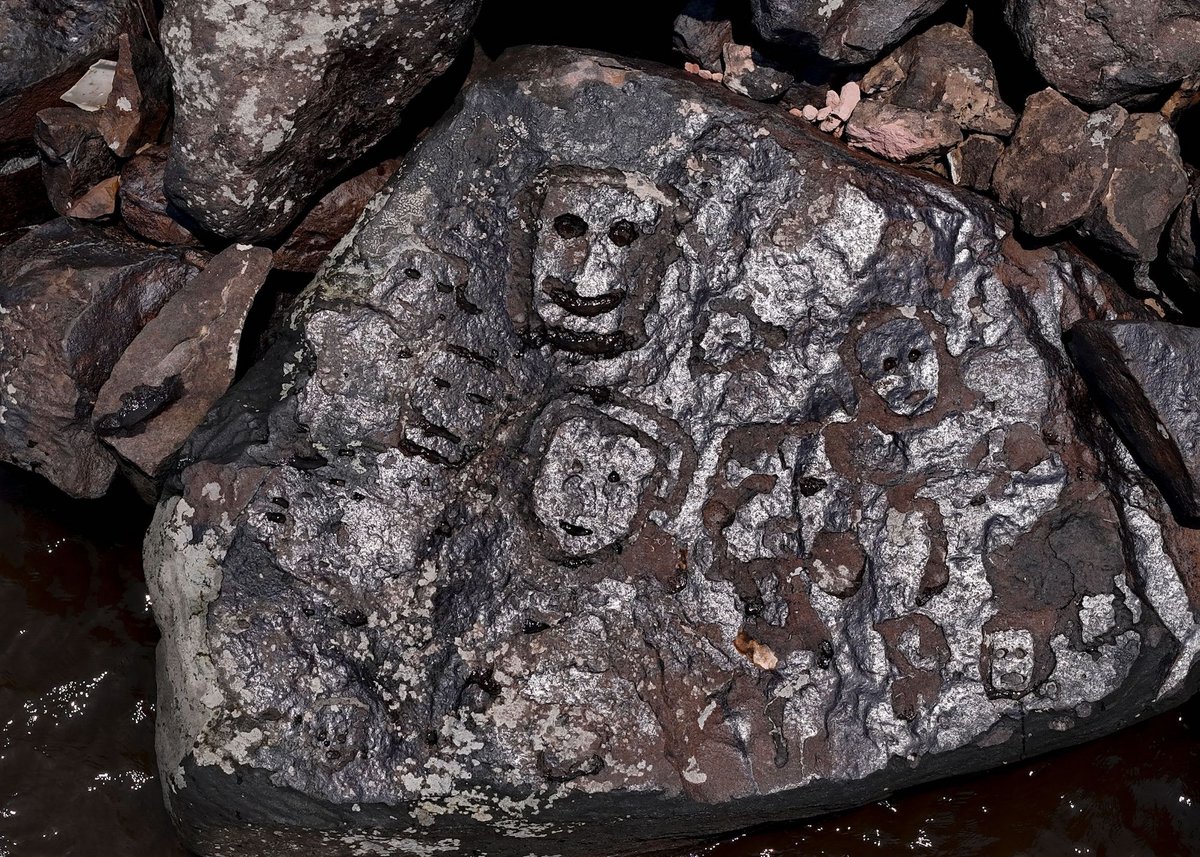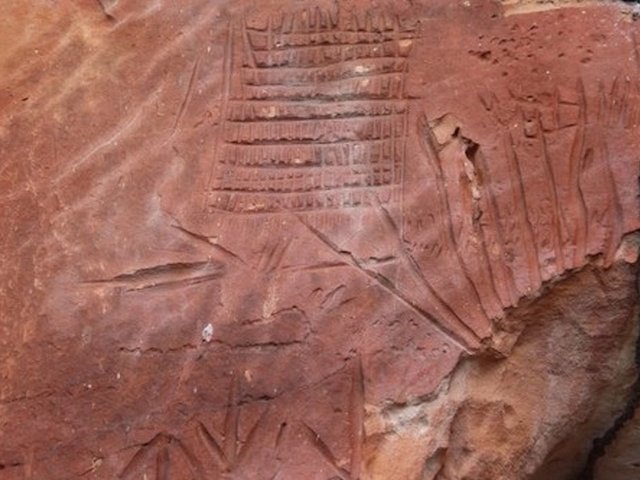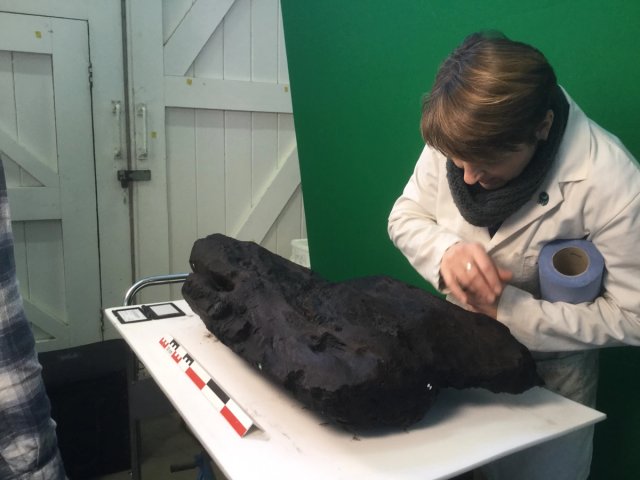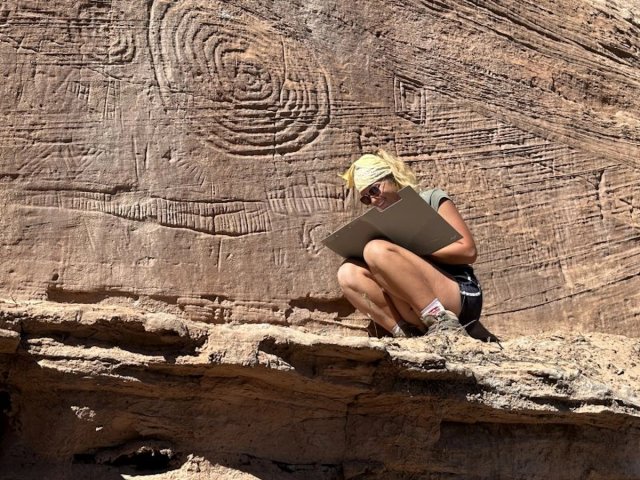A historically severe drought in the Amazon River system has revealed previously undiscovered precolonial carvings in a rocky outcropping along the banks of the Rio Negro near Manaus, Brazil. The region, known as Ponto das Lajes, is experiencing its worst drought in more than a century, and while some of the carvings have been seen before, the expanded variety will help archaelogists correctly identify their origins.
The site of the newly visible carvings, which depict human faces, was first identified in 2010, but this year’s drought brought the waterway's shoreline down by 50ft, exposing larger portions of rocks and sand.
"The engravings are prehistoric, or precolonial. We cannot date them exactly, but based on evidence of human occupation of the area, we believe they are about 1,000 to 2,000 years old," archaeologist Jaime de Santana Oliveira told Reuters.
One of the areas Oliveira’s team is studying features smooth grooves, where Indigenous inhabitants would sharpen spears and arrows prior to the arrival of European colonists.
"This time we found not just more carvings but the sculpture of a human face cut into the rock," said Oliveira, who works for Brazil's National Historic and Artistic Heritage Institute (IPHAN), which oversees the preservation of historic sites.
While the carvings are archaeologically significant, the fact that they are now exposed underscores the environmental crisis in the region. "We come, we look at (the engravings) and we think they are beautiful. But at the same time, it is worrying," Livia Ribeiro, a resident of Manaus, told the AFP. "I also think about whether this river will exist in 50 or 100 years."
This is not the first archaeological breakthrough in Brazil this year. In August, a 10th-century village in Formoso was discovered to have been designed in the image of the Pleiades star cluster.





